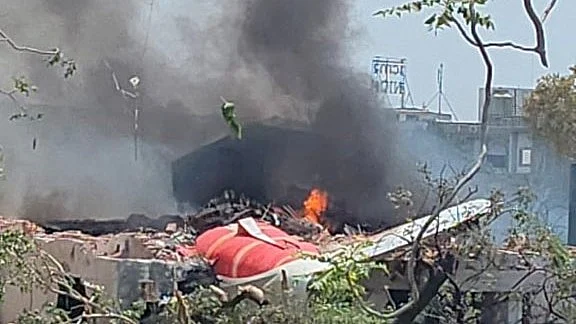AI171 tragedy: Was it lift loss, bird strike or engine failure? Theories abound
Flight data shows the aircraft barely reached an altitude of 625 feet before issuing a mayday and losing contact with the control tower

The tragic crash of Air India flight AI171 shortly after take-off from Ahmedabad has left aviation experts worldwide searching for answers, with preliminary analyses pointing to several factors that may have contributed to one of India’s most devastating aviation disasters in recent years.
The Boeing 787-8 Dreamliner, en route London Gatwick, went down moments after departing from Sardar Vallabhbhai Patel International Airport on 12 June, killing 241 people out of the 242 on board. One passenger — a British national of Indian origin — is the sole known survivor and remains under medical care. The aircraft’s descent into a densely populated locality, including a hostel near BJ Medical College, has also led to casualties on the ground, compounding the scale of the disaster.
A catastrophic loss of lift?
Flight data shows the aircraft barely reached an altitude of 625 feet before issuing a mayday call and losing all contact. This has prompted early speculation about critical issues during the initial climb phase — a period considered among the most vulnerable in any flight.
Aviation consultant John M. Cox, speaking to various news outlets, observed that the aircraft appeared to lack sufficient lift, raising the possibility of misconfigured flaps. “If the flaps were not properly set for take-off, the aircraft would struggle to generate the lift required,” he noted.
A similarly alarming concern was flagged by former British Airways captain Alastair Rosenschein, who told SkyNews that visual footage showed the aircraft still had its landing gear deployed, an anomaly during this stage of flight. “Gear should have been retracted by then. Keeping it down increases drag and compromises climb performance,” he stated.
The bird strike hypothesis
Several experts have pointed to the possibility of a catastrophic bird strike — potentially involving both engines. Dr Jason Knight, senior lecturer at the University of Portsmouth, said a dual engine failure from bird ingestion is a plausible explanation, especially given the aircraft's loss of thrust so early in its ascent.
Former DGCA official and seasoned Boeing 777 pilot Captain C.S. Randhawa agreed, citing bird activity near airports as a well-known but difficult-to-control risk. “The most probable cause appears to be a bird hit, though fuel contamination or control failure cannot be ruled out,” he said.
Engine trouble: A double failure?
Simultaneous failure of both engines in a modern Dreamliner is considered extremely rare due to layered redundancies in design. Still, the aircraft’s rapid loss of altitude has kept this theory in focus.
Professor John McDermid of the University of York described the timeline as “highly unusual,” stating: “To have an accident of this scale before reaching even 200 metres is extraordinary. It raises questions about either a dual engine malfunction or a severe systems failure.”
The crash has drawn messages of condolence to Indian prime minister Narendra Modi from many international leaders. Meanwhile, questions are now being raised about bird activity monitoring near airports, the effectiveness of take-off protocols, and the design safeguards of modern commercial aircraft.
This incident marks a dark chapter in India’s aviation history, not only because of the scale of loss but also due to the involvement of a technologically advanced aircraft like the Boeing 787 Dreamliner — widely regarded as one of the safest jets in commercial service.
Even as the wreckage is examined for the black boxes (to be analysed when found), the aviation community remains focused on uncovering the exact chain of events that led to this catastrophic failure, hoping to prevent such tragedies in the future.
Follow us on: Facebook, Twitter, Google News, Instagram
Join our official telegram channel (@nationalherald) and stay updated with the latest headlines
